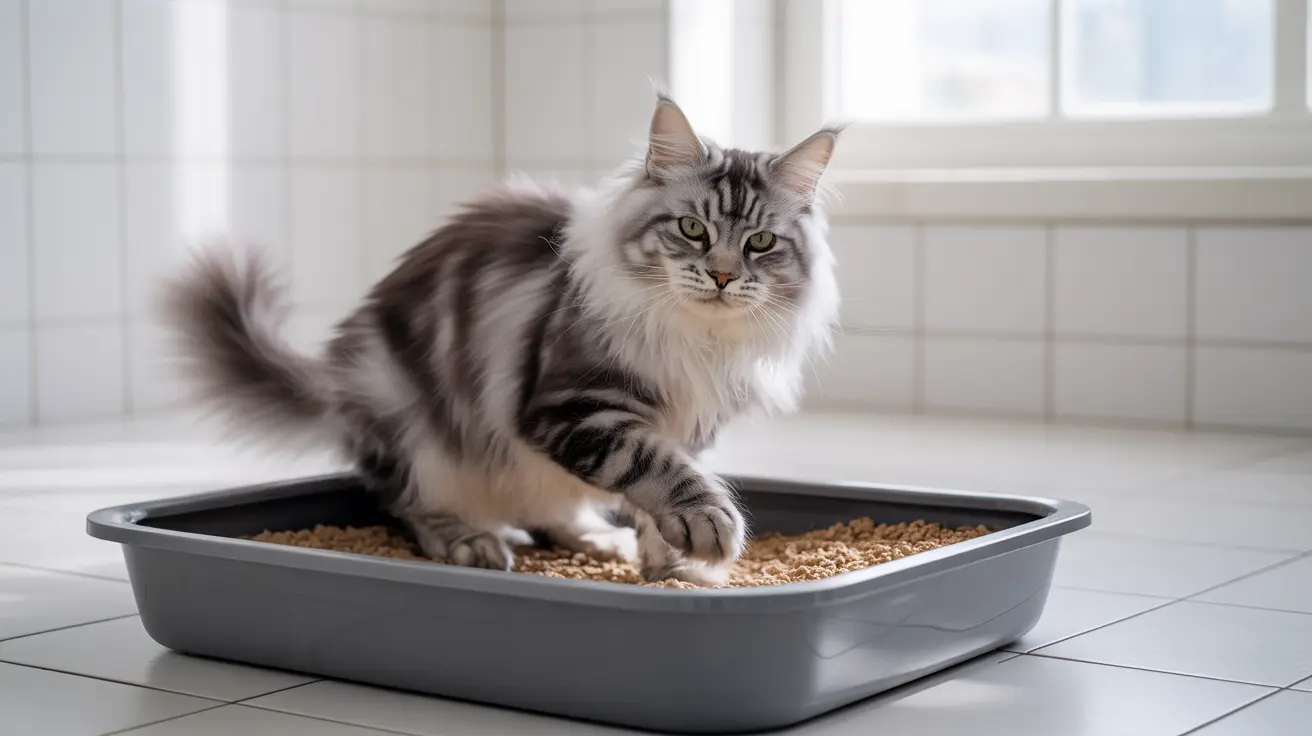The Golden Rule of Litter Box Sizing
The fundamental rule for litter box sizing is that it should be at least 1.5 times the length of your cat, measured from nose to base of tail. For an average adult cat measuring 18 inches, this means their litter box should be approximately 27 inches long. This extra space allows your cat to move freely, dig naturally, and turn around comfortably.
Standard vs. Recommended Dimensions
While typical commercial litter boxes measure about 16 x 10 inches, many cats need significantly more space. Industry experts now recommend minimum dimensions of 22 x 18 inches for adult cats, with larger breeds requiring even more generous proportions.
The depth of the box is equally important, typically ranging from 5 to 7 inches. However, senior cats or those with mobility issues might need lower sides for easy access.
Size Requirements for Different Cats
Large Breeds and Senior Cats
Maine Coons, Ragdolls, and other large breeds often require specially sized boxes. For these cats, experts recommend boxes measuring at least 24 x 36 inches. Senior cats may need boxes with lower entry points but should still have ample space inside for comfortable movement.
Multiple Cat Households
In homes with multiple cats, size becomes even more critical. The general rule is one litter box per cat plus one extra, and each box should be sized appropriately for your largest cat. This helps prevent territorial issues and ensures all cats have comfortable access to clean facilities.
Creative Solutions for Sizing Issues
When commercial litter boxes don't meet your needs, consider these practical alternatives:
- Large plastic storage containers (modify as needed)
- Cement mixing tubs (often 24 x 36 inches)
- Under-bed storage containers (for lower sides)
- Custom-built boxes for specific requirements
Signs Your Litter Box Is Too Small
Watch for these indicators that your cat needs a larger litter box:
- Hanging over the edges while using the box
- Frequent accidents just outside the box
- Refusing to use the box entirely
- Rushing out immediately after use
- Unable to turn around comfortably
Frequently Asked Questions
How do I measure my cat to choose the right litter box size?
Measure your cat from nose to base of tail while they're standing straight. Multiply this length by 1.5 to determine the minimum length your litter box should be. For width, allow at least 1.5 times your cat's length when crouching.
Why should a litter box be at least 1.5 times the length of my cat?
This size allows your cat to enter fully, turn around comfortably, dig naturally, and assume their preferred position without feeling cramped. The extra space also helps prevent waste from falling outside the box.
What size litter box is best for large or overweight cats like Maine Coons?
Large breeds need boxes at least 24 x 36 inches. Many Maine Coon owners successfully use modified storage containers or cement mixing tubs that provide 30-40 inches in length for optimal comfort.
How many litter boxes do I need for multiple cats, and what size should they be?
Follow the "n+1" rule: one box per cat plus one extra. Each box should be sized for your largest cat. For example, two cats would need three boxes, each at least 1.5 times the length of your bigger cat.
What are practical alternatives if commercially available litter boxes are too small for my cat?
Consider using storage containers, cement mixing tubs, or under-bed storage boxes. These alternatives often provide more space and can be modified with lower entry points if needed. Many are also more cost-effective than specialty pet products.
Conclusion
Selecting the right litter box size is fundamental to your cat's well-being and household harmony. Remember that bigger is usually better, and don't hesitate to think outside the box when commercial options fall short. By following these guidelines and paying attention to your cat's needs, you can create a comfortable and stress-free bathroom experience for your feline friend.






